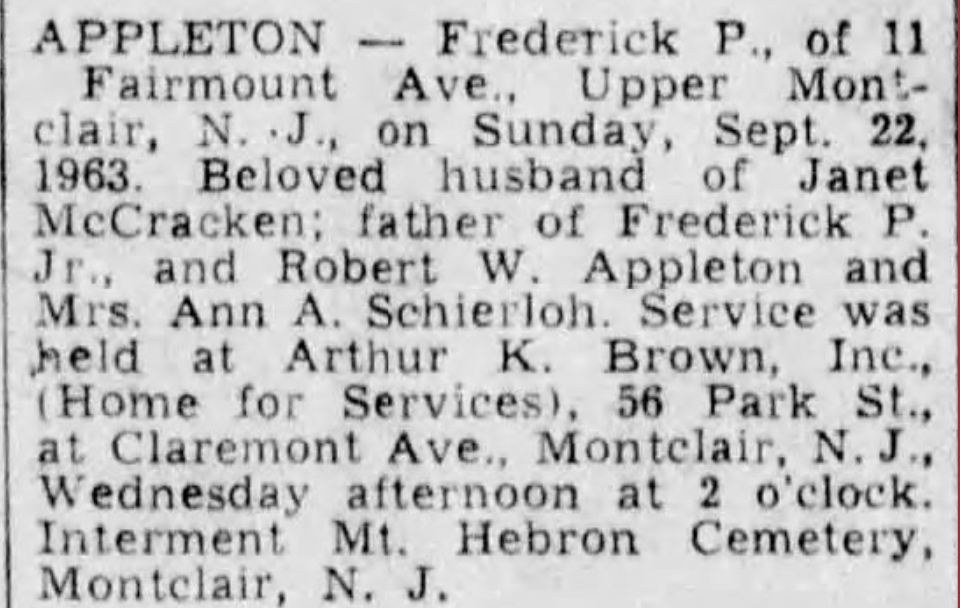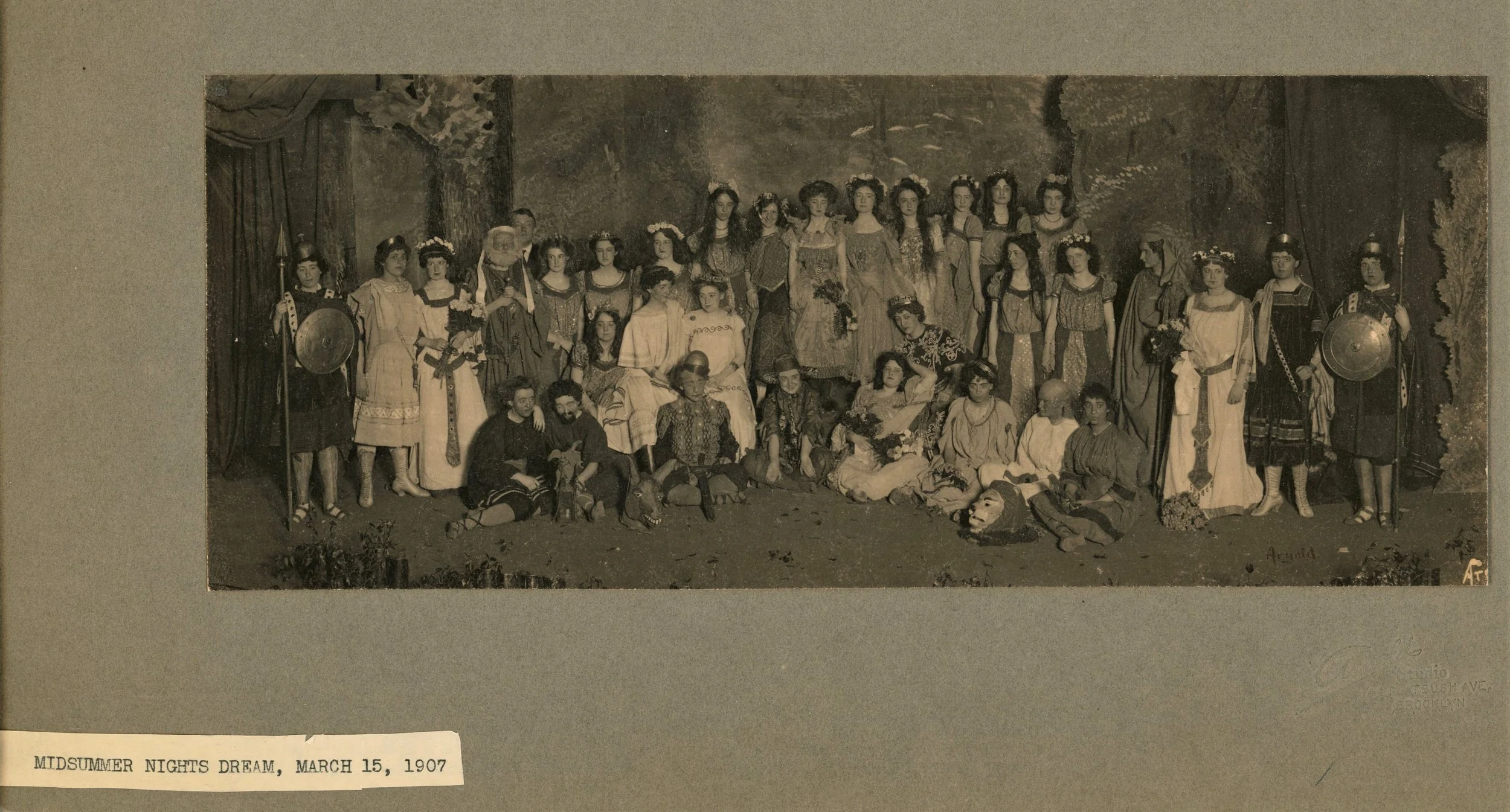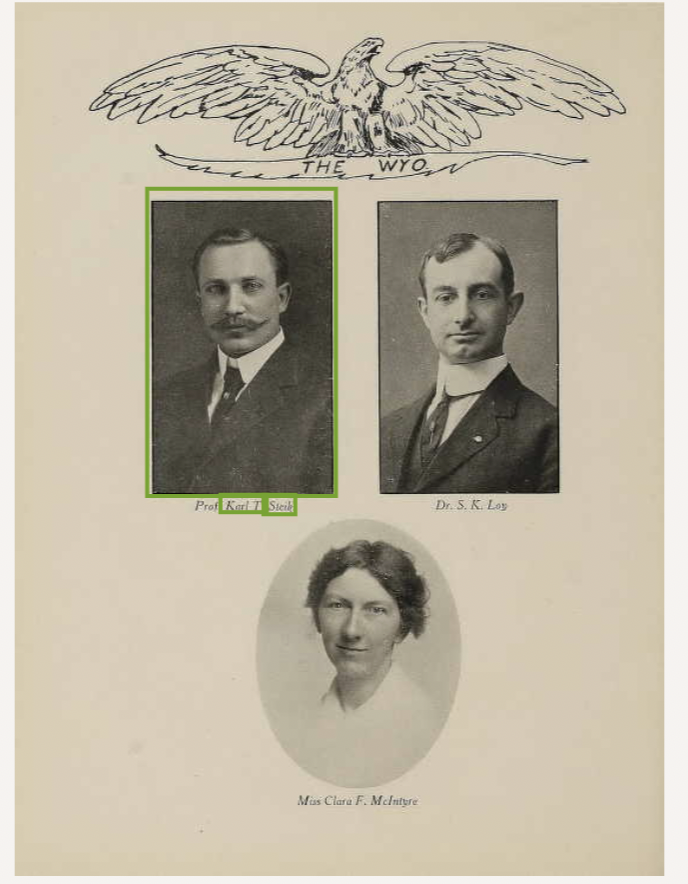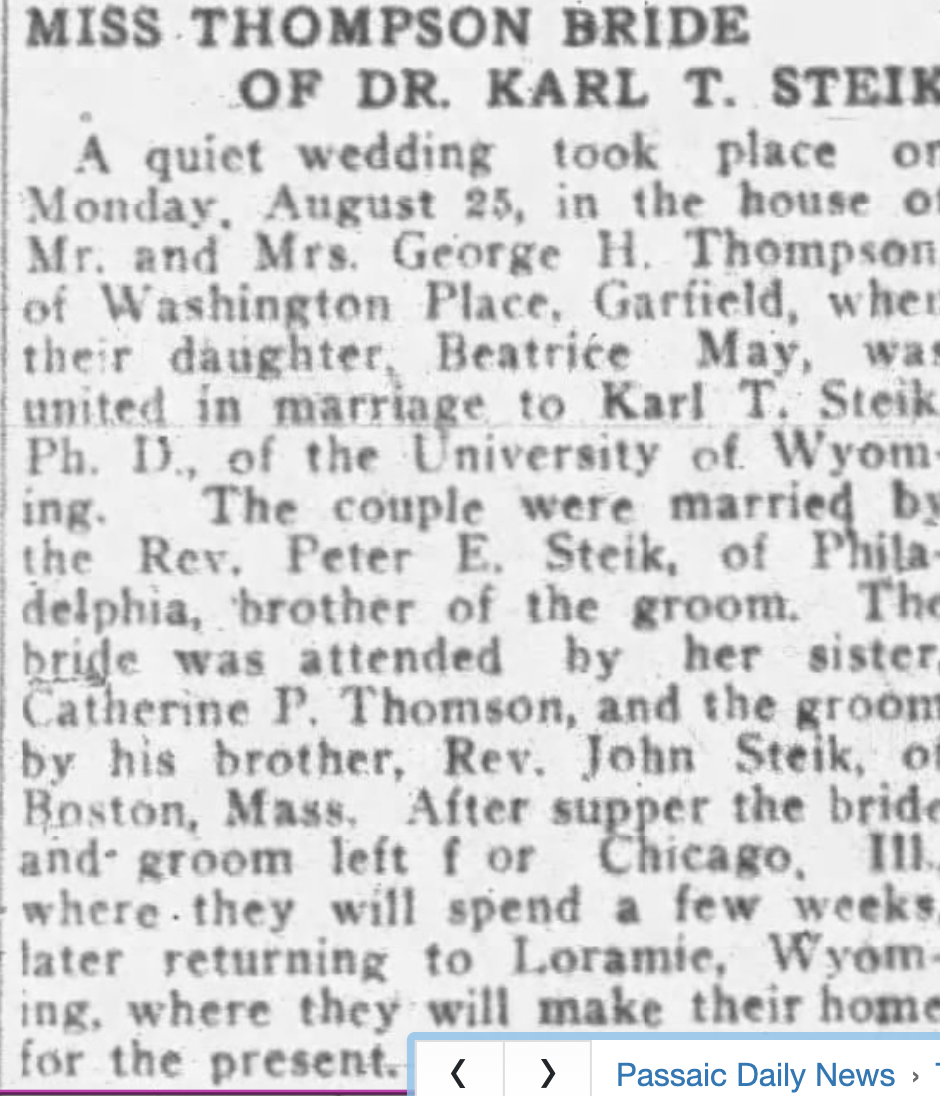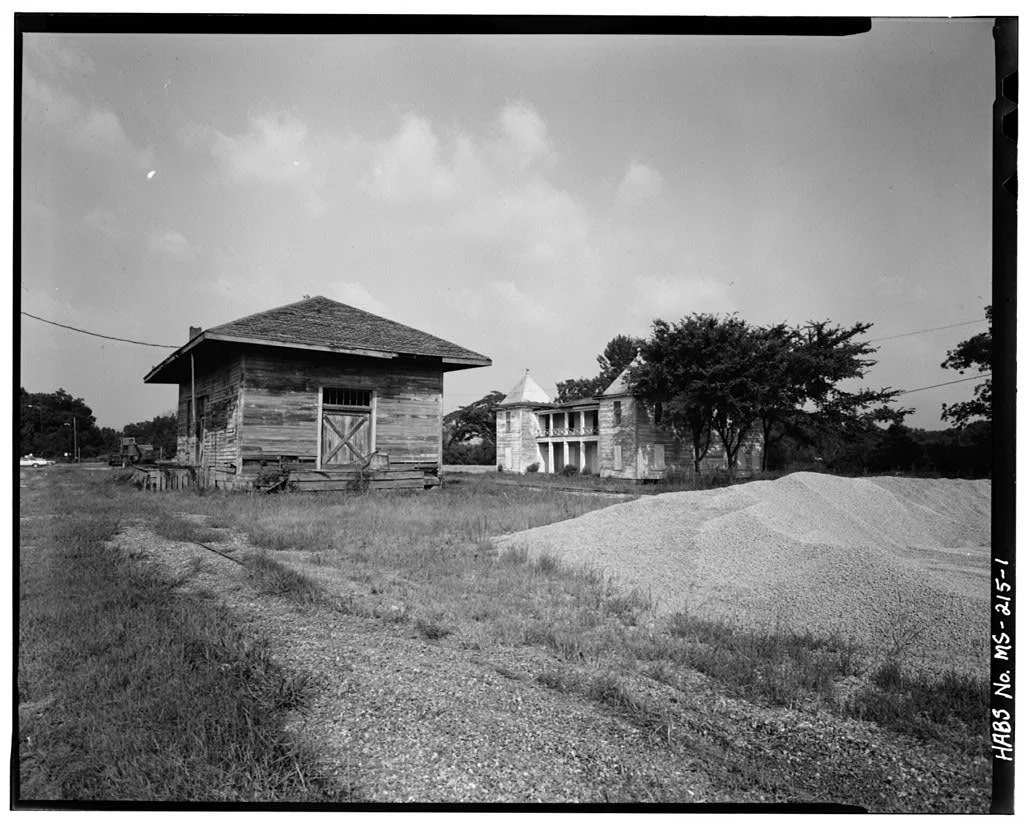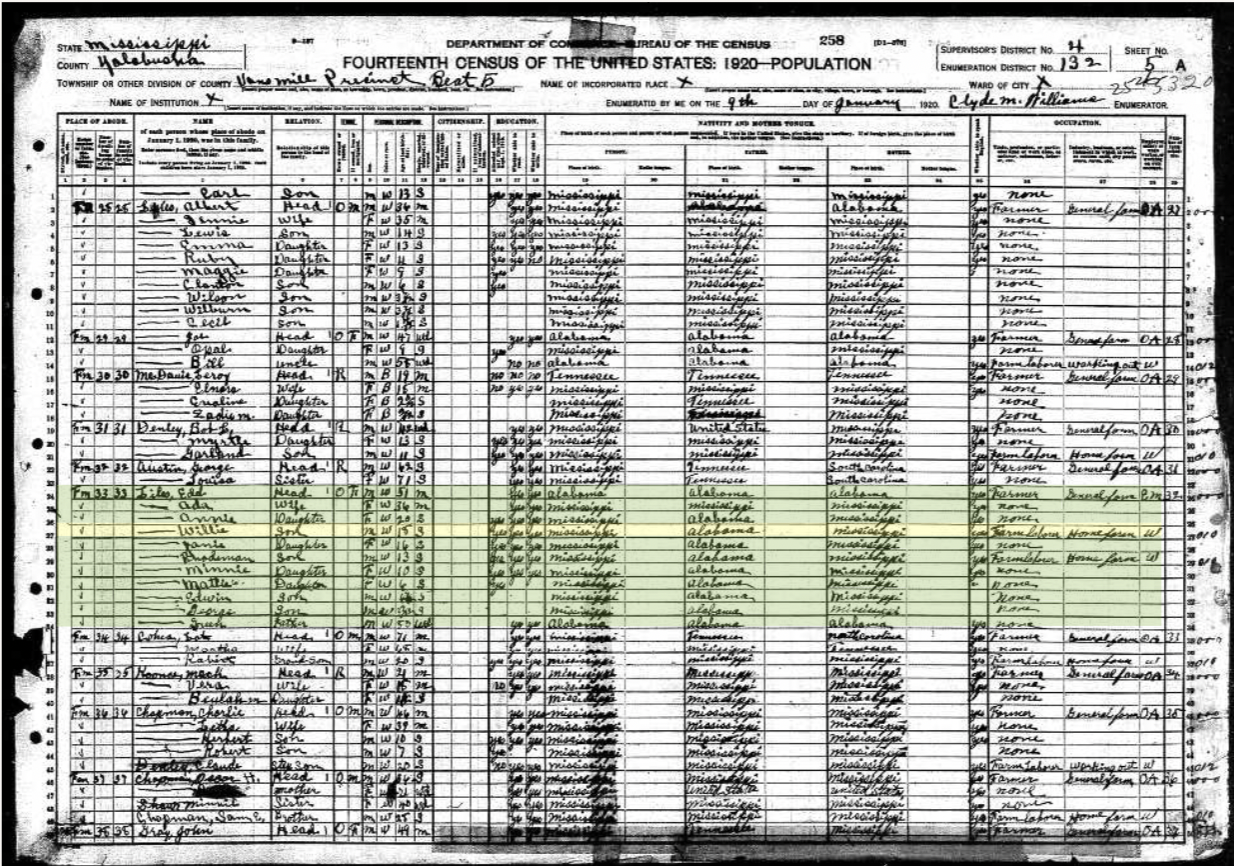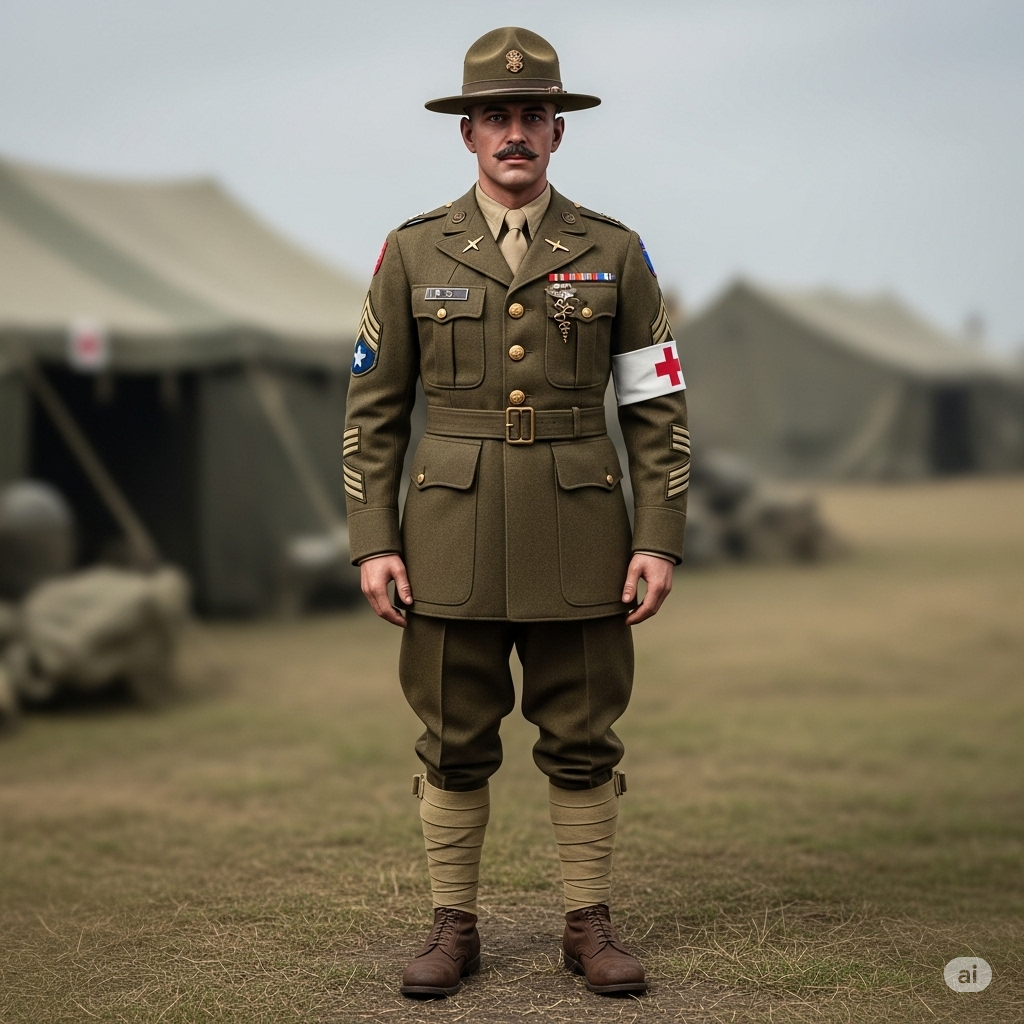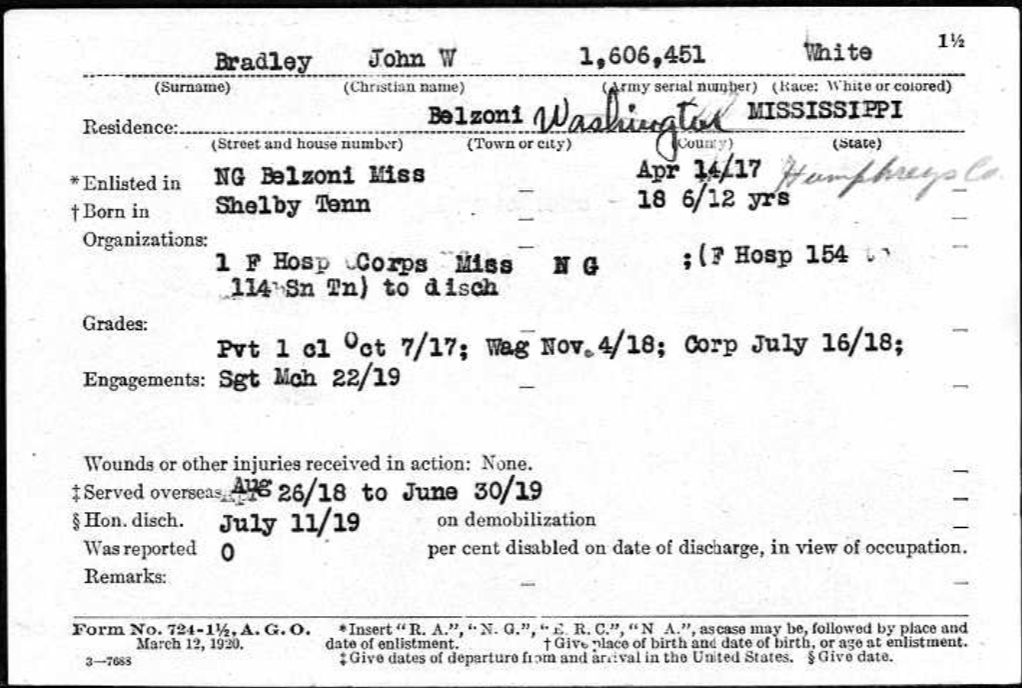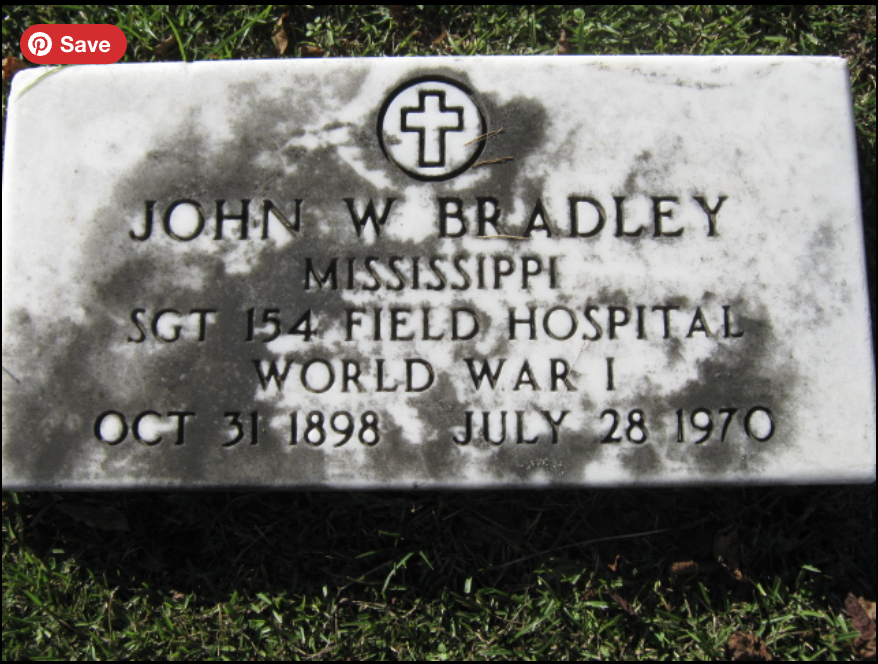dad's paternal grandparents
〰️
dad's paternal grandparents 〰️
Frederick Perrin Appleton
Frederick Perrin Appleton was born 1886 in Brooklyn, New York. His dad was also from New York, grandparents from England, and his mom was born in Wisconsin. He had two older sisters, Emily and Anna, and two younger sisters, Louise, and Florence. His family lived at 47 Vernon Avenue, Brooklyn. I know it was a four-family house with 2 stories.
Rendering of 47 Vernon Ave, Brooklyn
The area (Bed Stuy) was a middle-class and working-class residential neighborhood, populated by white, upper-middle-class families, predominantly of English, German, and Irish descent, with some Italian and Jewish immigrant communities starting to settle in the area. It was a "commuter town" for people working in Downtown Brooklyn and Manhattan, thanks to improved transportation links like the elevated railway (opened 1885) and the Brooklyn Bridge (opened 1883).
When he was 13 his mother died.
In 1910 he was 23 and working as a clerk in the paper industry and still living with his family.
WWI
Fred enlisted in the army August 15th, 1917 and was honorably discharged Christmas Eve, 1918. He began his service stationed at Plattsburg.
The "Plattsburgh Idea" and Its Participants:
Voluntary Preparedness: The Plattsburgh camps began even before the U.S. officially entered WWI (starting in 1913, and notably in 1915 and 1916). They were a key part of the "Preparedness Movement," advocating for universal military training.
"Gentlemen Soldiers": Initially, these camps attracted a specific demographic: wealthy young men, college students, businessmen, and professionals. They paid their own way for travel and camp expenses (though scholarships became available). The muster rolls were said to sound like Who's Who and The Social Register combined, with prominent figures like Theodore Roosevelt and New York City Mayor John Purroy Mitchell attending. The idea was that these influential citizens would set an example and become the backbone of a future officer corps.
While the camps initially aimed to build a reserve of trained citizens, they quickly evolved into primary Officer Candidate Schools once the U.S. entered the war in April 1917. Draftees for the "National Army" needed officers, and Plattsburgh became a crucial site for training them.
Days began early, typically with reveille at 5:45 a.m. Mornings were filled with calisthenics and extensive drills. Afternoons focused on specific military fields like infantry, artillery, cavalry, signal corps, or engineering. Training often culminated in a grueling, multi-day hike, with each man carrying a heavy pack (e.g., 42 pounds). These simulated battle scenarios and tested endurance. Trainees learned to clean and operate rifles and other military equipment. The camps were set up on the Plattsburgh Barracks grounds, which offered "plenty of rough country for maneuvers" and had an army post nearby. Trainees often lived in tents or temporary barracks.
back to regular life
In 1919 he married Janet McCracken
In 1920 they had moved to Foster avenue and he was working as a paper salesman. That’s the year they had Grandpa. In 1922 they had Robert.
By 1930 they’d moved to Wildwood ave in Montclair, New Jersey. Their house was valued at $25,000 ($471,580 in today’s dollars, and the house is currently valued at 2 million) and yes the census can confirm they did have a radio. Fred is now the vice president of the paper company.
It appears Fred enjoyed a cruise, which ended April 13, 1931. I found a record of him arriving in a New York port on a ship called the Reliance, which was operating as a cruise ship at the time, probably to the West Indies.
by 1937 he was president of the paper company. In 1940 he listed his income as $5k.
Frederick Perrin Appleton died September 22, 1963
Janet Wylie McCracken Appleton
Janet Wylie McCracken was born on August 20th, 1893 in Brooklyn, New York. Her dad was a Scottish immigrant, and her mother immigrated from Northern Ireland. They lived in a brownstone at 842 Lafayette St in Brooklyn.
She had an older sister named Marion and two younger brothers, Thomas and Robert,
According to the 1900 census Janet’s father was working as a bookkeeper, they owned their home (with a mortgage) and they had two teenage servants living with them - one German and one Swedish.
According to the 1910 census, Janet’s father was working as an officer with a realty company, they’ve paid off their mortgage, and now they have just one servant and she is Norwegian.
life as an immigrant who is a teenage girl who is a servant
Most teenage servants, especially in middle-class households, were "maids-of-all-work," meaning they were responsible for virtually every household chore: Cooking all meals from scratch. extensive cleaning (sweeping, mopping, dusting numerous rooms, scrubbing floors, washing windows), laundry (hand-washing heavy linens, boiling, wringing, ironing – a very laborious process before machines), caring for children (feeding, dressing, supervising, playing), tending to fires (carrying coal or wood, emptying ashes), and running errands, answering the door and telephone.
For this intense labor, wages were meager, often between $3-$7 a week in the early 1900s. A significant portion of this money was almost always sent home to support her family, either in Brooklyn or back in her country of origin.
The sacrifices made by these young women were often pivotal for the next generation. Their daughters were far less likely to enter domestic service, instead pursuing a wider range of occupations made possible by their mothers' labor and the growing opportunities in America.
growin up
Adelphi College
In 1915 Janet graduated from Adelphi College. Adelphi College was a women-only liberal arts college in Brooklyn, at the corner of St. James's Place and Clifton Place. It shared some facilities with the Adelphi Academy (a private preparatory school that had given birth to the college), though the college had its own dedicated "Pratt Collegiate Building" and an athletic field. Janet got a Bachelors of Arts and was appointed to a Phi Beta Kappa-esque society called National Society.
In 1919 Janet married Fred. In 1920 she had Fred, and in 1922, Robert, and 1933, Ann. Her dad died in 1934. Her mom died in 1937. Her husband died in 1963.
Fred, Robert, Ann
Robert
Ann
Janet McCracken Appleton died in 1976.
dad's maternal grandparents
〰️
dad's maternal grandparents 〰️
Karlis Theodor Steik
Karlis Theodor Steik was born July 12, 1884 in Oši Farm, Umurgas Parish, Valmiera County, Vidzeme, Latvia to Peter Steik and Katrina Amolin. (He identified as Latvian but Latvia was not independent from the Russian empire until after WWI.)
"Oši" (pronounced roughly "Oh-shee") is a common Latvian place name, often referring to ash trees (Latvian: osis, plural oši). So, "Oši farm" likely means "Ash Tree Farm" or "The Farm of the Ash Trees." Many Latvian farms and homesteads are named after natural features, former owners, or family names. Umurgas Parish is the administrative division, a rural municipality (or civil parish), within which Oši farm is located. Parishes are the smallest local government units in Latvia. Valmiera County (Valmieras apriņķis): Historically, Latvia was divided into counties (apriņķi). While Latvia has undergone administrative reforms and the current system uses larger municipalities, Valmiera County was a significant historical administrative unit. Valmiera itself is a major city in the region. Vidzeme is one of the five historical and cultural regions of Latvia, located in the north-central part of the country. It's known for its forests, lakes, and rolling hills, and is a historically important region.
Life on a farm in Umurgas Parish in 1889 was characterized by hard, seasonal labor, a strong reliance on agriculture and animal husbandry, and a close-knit family and community structure. While the formal abolition of serfdom had occurred, its lingering effects meant that many farmers still faced challenges related to land ownership and economic independence, even as the region slowly integrated into the broader economic changes of the Russian Empire.
From a letter written by a grandson of Karl Steik’s, Lars Brehmer (Carolyn Steik Brehmer’s son):
“In the State Archives of the Pskov region contains several cases in which Karl Steik is mentioned, as a disciple of the Pskov provincial gymnasium.
In August 1894 he and his brother, Peter Steik, and tried to pass the entrance exam and enroll in gymnasium: Karl in the second grade, Peter in the fourth, but they were not accepted. The boys' father sent a petition to the gymnasium, but it was rejected because the children had poor knowledge.
In the same year the two brothers began to learn in school, although it is not clear why they were eventually accepted. For several years the brothers were often exempted from tuition fees, as parents were poor people and could not pay. Karl was a better student than Peter. He was one of those students who usually received 2's, rarely a 3. These grades reflect good behavior, attention and diligence, 1 being the highest grade. In 1896, Karl received a steak mark "3" for conduct for writing a fake letter written on behalf of his brother (the letter is not specified) and giving it to the classroom teacher. This case was discussed at the Pedagogical Council of the gymnasium. Peter Steik was lazy, so the estimate was low, and he often stayed in school during vacation in order to prepare for exams. Karl, by contrast, went from class to class without difficulty. In 1897 he was transferred to grade 5 without exams (so encourage students to study well.) In 1899 both brothers were in the 6th grade. Probably Peter did not pass the exam and repeated in the 6th grade. In the 7th grade both transferred out, but of their further fate is unknown.”
Now we know Pop went on to Tblisi to write his Abitur exam.
If I understood correctly, the father of Karl and Peter Steik was a pastor (John Steik, associate pastor in 1891) in the first built in Pskov Evangelical - Lutheran parish of St. James. (S. 82 - Vladimir Solodovnikova book "Martyr James Pskov"). We know this is wrong - John was the much older brother. Since Pop faked at least one letter to his teacher, maybe John was somehow posing as the father? Could be - he was 28 years older than Pop I believe. Interesting to say the least! By the way, she confirmed that in Pop's time this was a boarding school, so he probably lived there as well.
I replied to her yesterday and gave her more info about Pop and attached 4 pictures - the pair with the balalaika and the cowboy duds, the one of Pop in the U of W laboratory and that one portrait from the sixties with the Lettonia cap. I told her what the cap signified, and also that I still have the shirt from the balalaika picture and wore it when the CU Russian Choir performed ( I sang in that choir.) From the information we found I can telly you that from 1895 Karl attended Pskov Gymnasium and from 1899 to 1901 Tiflis (Tblisi) Gymnasium No.2. However, Arno found a short biographical article about your grandfather (in Latvian) that contained some interesting facts. For example, did you know that Karlis participated in shooting competitions and during his school years he also worked as a home teacher in general Lavrinovsky's family in the district of Orl?
my grandfather Karlis Lettonia member number was 292. His older brother Janis was 13 and other brother Petris was 293.”
Pskov Gymnasium
Karl’s older brother John’s Lutheran church in Pskov
Immigration
In 1908 Karl emigrated to Wyoming. Laramie, Wyoming in the nineteen teens was a blend of ranchers, railroad workers, university faculty, merchants, and a working class. The University of Wyoming, where Karl taught, was established in 1886.
Karl’s naturalization form where he denounced Nicolas II, the emporer of Russia
400 South 10th Street Laramie, Wyoming, where Karl lived as of 1917
Karl’s WWI draft registration card. Note that he’s tall, medium build, light hair, blue eyes
In 1919 he married Beatrice May Thomson.
They moved back east and had Betty, grandma, Caroline, and Constance. I know they moved around a lot because in Grandma’s letter she wrote: “My early years were just like other children except we moved more than other poeple. From Philadelphia we went to Elizabeth, NJ, To Clifton, NJ, to Westfield NJ, then Finally to Montclair, New Jersey, where we lived in four different houses.”
In 1930 he was working as a chemist for an oil company. In the 1940 census he wrote he was a consultant. Grandma wrote that “When I got to high school things changed. We moved again. My folks hoping to buy a bigger house but my father lost his job. I didn't mention it before but this was the time of the Depression. Things were really tough and every penny counted.” In the 1950 census he was back in a lab.
Karl’s FBI file
Karl Steik died August 21, 1973.
Beatrice May Thomson Steik
Beatrice May Thomson was born December 1, 1893 in Paterson, New Jersey. Her parents (George and Beatrice) were both Scottish immigrants. She had three siblings - Robert, Henry, and Catherine. Her mother immigrated in 1889 and her father immigrated in 1887.
In the 1900 they were living at 998 E 25th street in Paterson. He was an insurance agent. Same goes for the 1910 census.
998 E 25th St Paterson, NJ
From the University of Wyoming 2018 yearbook
From Grandma’s letter: I remember going to Cape Cod in the summer and our old car would always boil over but once we were there we had fun. Mother taught me how to swim. We picked blueberries, watched sailors stand on their heads on the railing of a very tall monument, and hiked across the dunes to play on an old sunken ship. At night we always sat around the dining room table and played cards and games. We always had lots of company so we were never without friends.
We had two cousins who lived in Philadelphia [these would be Peter Steik’s kids] and sometimes we would go out and stay with them. There was an ice cream store on the corner and when the tubs were almost empty the owner gave us each a spoon and let us scrape them out. We also chased the ice truck and sucked the chops that fell off the truck.. We didn't have any money to spend so we chewed tar off the street. We thought it made our teeth white. I don't know whether Mother ever knew this. For games we played kick the can, giant steps, hide and seek, etc. We always amused ourselves.
For Thanksgiving we would go to my grandparents house in Passaic. One year there was a fire in the wall behind the big old fashioned stove. Luckily the firehouse was on the corner and so the fire was quickly put out. I don't remember what happened to the dinner. When we visited there my grandfather would take Betty and me to the park on the corner so we could watch the trains go by. Then my father would buy us all ice cream and that was a real treat.
When I was about 5 or 6 I took ballet lessons and was in a show where I was a butterfly. My mother had made me a gold costume complete with very colorful wings. After the show I had to have my picture taken but my ankles were so weak by then that someone had to stand behind a curtain and hold me up. i guess that ended that.
I also took piano lessons off and on for several years and then my folks decided I should take viola lessons. They didn't ask me and I hated them. They finally decided that wasn't for me. Guess my talents were not along those lines.
Living in Clifton, when I was about 8, I almost died. There was an epidemic of diphtheria and although Betty and I had been inoculated against it she came down with it first and I was next. The hospital was so full mother and daddy took care of us at home. Both my younger sisters were next. Bubbles was only a baby. Fortunately their cases were mild because I was really sick. To make matters worse, I developed strep throat at the same time. On Christmas Day my throat closed up and the doctor at the bedside said he couldn't do anything more for me, but mother took a nail file and stuck it down my throat to open an air passage. For days I was delirious from the high fever - crawling under the bed, hiding in the closet, etc. A nurse came every day to help clear my throat. Because it was damaged I had to learn how to talk all over again. I remember crying because no one could understand me.
When I was 12 I went to Girl Scout camp for 2 weeks. It cost $12.50 a week. Mother didn't think I'd stay because I had never been away from home but I loved it. We swam, canoed, did crafts, and rode horseback. I went again the next year and when I was older Betty and I went to camp in Maine for a month.
At Christmas time Mother would take us in to Radio City to the Christmas show. That's when we first saw the famous Rockettes. There was a movie and the shows were great. She took us to see some Princeton football games. We also went up in the Statue of Liberty and to the top of the Empire State Building. Then down to Washington to see the White House, the Lincoln Memorial, the Washington Monument, the U.S. Mint, etc. She took us to many interesting places.
We were lucky to be able to spend a month at the Jersey Shore each summer. Sunscreen was unknown at the time and we did get burned sometimes. Mother had a very heavy friend who could not sink and she would take us into the ocean and we would all hang on her. I think she was the reason we loved the ocean and had no fear.
High school was not a favorite time in my life. The war was starting and there was rationing - stamps for meat and gas, and nylon stockings were impossible to get. Mother was a great one for entertaining service men and she would save the meat stamps for when they came to dinner. Mother was very active in the Red Cross and she would take some of us young girls to New York to dances on the aircraft carriers. As for school - Latin was deadly and chemistry was awful even though my father was a chemist.
After graduation Mother and I drove to Colorado to pick up Betty in Boulder (University of Colorado). It was a great trip although very hot because there was no air conditioning in cars. We went to Yellowstone National park - saw buffalo, went backpacking on mules up into the mountains. I saw my first rodeo and had my picture taken with an Indian chief who was walking along the road.
Now came the time to decide about college. I really didn't want to go because high school had been so hard but I knew my father wanted his four girls to have a college education. Mother took me down to see Duke and we got caught in a terrible snowstorm. Since there were no heaters in cars I got frostbite on two of my toes. We went to see other schools but I decided to go to Colorado.
In 1944 I graduated and my folks came out for graduation. All the express trains were being used to transport the troops so we had to take a local one home. My folks wouldn't let me fly, and of course they didn't, and so it took two nights and a day to go from New Jersey to Colorado. It was very hot so the windows were open and by the time we got home we all looked like we had just come up from a coal mine. When we arrived in Newark we grabbed a taxi, got home, and jumped in the bathtub. It wasn't a fun trip. I graduated with a degree in Elementary Education, and could have taught in CO, but my father wanted me at home.
Beatrice died July 13, 1978
mom's paternal grandparents
〰️
mom's paternal grandparents 〰️
William Jackson Liles, Sr
Willie on the lap, Annie standing
William Jackson Liles, Sr was born January 22, 1901 in Yalobusha County, Mississippi to John Edward Liles (he went by Ed) and Ada Bell Smith Liles. Ed was a farmer and 13 years older than Ada. In 1910 she was 27 and had a 10 year old daughter so she had her daughter at 17 so she was married probably at 16. “Willie” was 8, Janie was 6, Roadman was 3, and Minnie was just born. There were two other people living in their house, both white. One says he’s 6 but also that hes a veteran so I think one of those things got filled in incorrectly by the person taking the census. I assume they’re both helping on the farm.
Life in Yolabusha County at the turn of the century
Cotton remained the dominant cash crop. The economy of Yalobusha County, like much of Mississippi, was heavily dependent on its cultivation, harvest, and sale.
Modern amenities like electricity, indoor plumbing, and widespread telephone service would have been extremely rare outside of a few main businesses or very affluent homes in larger towns. Most homes would rely on wells for water, outhouses, and kerosene lamps for light.
By 1920 Willie had three new siblings, Mattie, Edwin, and George, and his 80 year old grandpa had moved in. Willie was now working on the farm. That grandpa, John Edward Liles’ father, is named William Green Liles but according to the census he goes by Green.
Adult Willie
In 1924, at the age of 22, Willie married Maifred Allie Bobbitt. In 1925 they had William Jackson Liles, Jr. In 1927 they had John Edward Liles Jr. In 1929 they had Maifred Aleen Liles.
In 1930 they’re living in Bruce, Mississippi in a rented home. Willie is working in a grocery store. They have a 19 year old white woman named Orene Logan living with them. Her relation to them is described as “boarder.” She is a telephone operator. He is listed as a veteran but I cannot find his draft info for WWI. I do have the WWII registration card:
Bruce, Mississippi
Bruce, Mississippi, was a relatively new town, officially designated in 1928, largely built around the E.L. Bruce Company's lumber mill. This means that by the 1930s, it would have been a company town to some extent, with its economy tied to the mill.
During the Depression, many farmers and mill workers would have relied heavily on credit, especially the "furnish" system. They would get supplies from the general store on credit, to be paid back after the cotton harvest or on payday from the mill. This often kept families in debt to the store owner. (We know from mom’s stories that they were generous about letting folks buy on credit without paying back.)
The grocery/general store was a community hub. People would gather there to chat and hang.
a lot of my research is scouring the censuses and this is an example of one. This is the 1920 census. It lists names, ages, race, relationship to the head of house, language spoken, birth place, birth place of both parents, often address of the house, whether it’s rented or owned, whether the mortgage is paid off or not, whether they’re in school, can they read, can they write, what is their job, how long have they been out of work..
One of my favorite census questions is how many hours did you work in the week before filling out the census. In 1940 Willie worked 84 hours as the owner of his grocery store. Maifred also listed herself as a worker in the grocery store, which is notable because usually for wives the occupation says none. She also worked 84 hours. They worked 52 weeks in 1939. There’s a 22 year old white man named Guy James living with them. He describes himself as “hired helper” in the grocery store.
Ed and Ada
In 1961 his dad died, and his mom died in 1966. Willie died Jan 17, 1988.
Maifred Aileen Bobbitt Liles
Maifred Aileen Bobbitt was born May 26, 1907 in Coffeeville, Mississippi to Lee Benson Bobbitt and Alax Pittman (not a typo. Her gravestone says ALAX). Both Lee and Alax were from farmer families. Maifred was the oldest of three. She had brothers Arthur and Hubert. In the 1910 census I see that Lee and Alax owned their farm with no mortgage. Owning a farm without a mortgage in Mississippi in the early 1900s was a position of significant and uncommon security, independence, and social standing. It meant a freedom from the debt cycle of sharecropping/tenant farming, plus it created generational wealth that could be passed down.
At 16 she married Willie, and at 17 she had Poppa B. This was in Okolona, Mississippi, and then they moved to Bruce.
In 1940 they owned their home and it was valued at $4,000. ($92k now). I can’t find the exact address, but I see Johnson Road. Her dad died in 1954 and her mom in 1960.
Religion aka what does it mean that everyone was Presbyterian
Poppa B’s side - Maifred and Willie are the only non-Presbyterians I have found in the entire family, besides Karl Steik’s brother being a Lutheran pastor. Everyone else, mom’s side and dad’s, is Presbyterian.
In early 1900s America, Presbyterianism offered a distinct blend of intellectual Calvinist theology, a representative democratic governance structure, and a strong emphasis on education and civic responsibility, often positioning it as a significant influence among the nation's professional and educated classes. This was in contrast to the more evangelistic and emotionally expressive Methodists and Baptists, the hierarchical and immigrant-centric Catholics, or the more liturgical and established Episcopalians.
comparing the culture of Presbyterian families to other religions and denominations at the turn of the century
Culturally Methodists and Baptists were less formal, more expressive, and more diverse in class and wealthy. Catholics were more communal and contained (with their own schools, hospitals..), Episcopalians were more formal and more aristocratic. Lutheranism at the time was tied to an ethnic identity (German or Scandinavian). They often maintained their native languages in services and schools longer than other immigrant groups.
Presbyterian culture was largely integrated into and influential within the dominant Anglo-Protestant mainstream society. In contrast, Jewish culture in the early 1900s (and other non-Christian faiths) was that of a distinct minority, often concentrated in urban areas. Jewish communities focused heavily on maintaining their unique religious and cultural identity, facing pervasive antisemitism and often creating their own social and educational institutions (synagogues, community centers, benevolent societies) to preserve their heritage and provide mutual support in a sometimes hostile environment. Their worship was distinct (Hebrew liturgy, different holy days, kosher laws), and their social practices varied significantly from the Christian majority.
mom's maternal grandparents
〰️
mom's maternal grandparents 〰️
John Wynne Bradley
John Wynne Bradley was born on Halloween in 1898 in Henderson, Tennessee to Lindsay Bradley and Sallie Stumph Bradley. He had three older siblings, Fred, Gladys, and Howard. Sallie died the year after he was born. His dad married Mary Sue Harper when he was 5.
Henderson had a population of 2,000 and was a railroad hub with a growing business district. Agriculture-based economy. The Civil War had a profound impact on Henderson, as it was a Confederate recruitment center and occupied by Union forces. By 1898, the town would have been well into its post-war recovery and growth phase, but memories and effects of the war would still be present. Religion played a very important part in the lives of Tennesseans. Baptist and Methodist churches were prominent, and camp meetings were common in the region.
Henderson, Tennessee in 1898 vibes
Belzoni, Mississippi
They moved to Belzoni, Mississippi, when he was 12. Belzoni in 1910 was a small but burgeoning Delta town, whose existence was intimately tied to the cotton industry. It was a place of stark contrasts, where the prosperity of a few white landowners rested on the exploitative labor of a large, predominantly African American population living under the harsh realities of Jim Crow segregation.
Belzoni, Mississippi
Lindsay worked as an agent with the railroad. This was a relatively well-paid job, likely earning between $2,300 and $3,200 annually. This income would have afforded them a comfortable and respected life in the context of a predominantly agricultural and often impoverished Mississippi Delta.
Workplace of a railroad agent in Belzoni Mississippi in 1910
Home of a railroad agent in Belzoni, Mississippi in 1910
Military service
At 18 (in 1917) John Wynne Bradley enlisted in the army after completing on eyear of college. I know from his draft card he was 5’8” and 160 with brown hair and blue eyes. He was a sergeant in the 154th field hospital and suffered no wounds. Probably his tasks included:
Supervising Enlisted Personnel
Managing and distributing medical supplies, equipment, and rations.
Moving patients from aid stations to the field hospital, and then preparing them for further evacuation to evacuation or base hospitals.
Maintaining Order and Hygiene
Administrative Duties
mockup of his likely uniform
He was honorably discharged on August 22nd, 1918 and rode home on a ship called the SS Toloa. The SS Toloa was owned by the United Fruit Company which was conscripted into war service and sailed troops back and forth to France during WWI. The trip probably took 7-10 days. The boat arrived in Hoboken.
draft card from WWII
post-war
Post-war he was back in Belzoni, Mississippi and working at a hardware store. He moved up to Clarksdale, which was about an hour and a half north, and then to Grenada, an hour and fifteen minutes east. He married Margaret Moody in 1926, and had Grammy in 1929.
According to the 1930 census he was working as a “commercial traveler” (traveling salesman) and living with Margaret and baby Grammy at Margaret’s parents’ house in Grenada. Mr. Moody (Margaret’s dad) was an agent selling fire insurance. By the 1940 census they were in their own home in Grenada, and Titter had been born in ‘34. He was now also selling fire insurance. They owned their home. Its value is listed as $3,500 which is $81,220 in today’s dollars. (Today's home prices are about 21 times times higher than the average price in 1940 when adjusted for inflation.)
Grenada
Life for a white family in Grenada in the 1930s was shaped by the pervasive realities of the Great Depression, the rigid social structure of Jim Crow segregation, and deeply ingrained Southern traditions. Mississippi was one of the poorest states in the nation, and the Depression hit its agricultural economy particularly hard.
Grenada, like all Southern towns, operated under a rigid system of racial segregation. White families lived in a "white world" with better infrastructure (paved, tree-shaded streets, brick homes) compared to the "Negro world" of dusty dirt roads and "shotgun shacks." It was common for white families, even those of modest means, to employ Black women as domestic workers, providing household help and childcare, often for extremely low wages or even just room and board.
AI generated image of a $3500 house in 1940 Grenada, Mississipppi
Later life
In the 1950 census John Wynne Bradley wrote that he owned his own insurance company. They were living at 340 South Street.
340 South Street Grenada, Ms
application for military headstone
John Wynne Bradley died July 28, 1970 at the age of 71.
Margaret Moody Bradley
Margaret Moody Bradley was born March 12, 1901 in Grenada, Mississippi. She was the fifth child of Thomas Edward Moody and Pinkney Margaret Morrison Moody. Two of her older siblings had died before she was born (Russell, and Edward). Living with them, according to the census, was a “mulatto” servant named Missie Ward. She was 13. Her mom died when she was 23, and she married John Wynne Bradley at 26.
Margaret went to Grenada College, and graduated from the University of Mississippi. Lifelong Presbyterian. She died in 1985.
the name Margaret
There are so many Margarets in our family history it’s a joke. On both sides. I’m like guys, there are other names. Often the mom is a Margaret and the wife is also Margaret. In terms of the famous lineage of Margarets that ends with me:
Margaret Wynne Liles Appleton (mom)
Margaret Bradley Liles (grammy)
Margaret Moody Bradley
Pinkney Margaret Morrison Moody (“Pinky”)
Margaret Frances McClure Morrison (“Fannie”)
Margaret Crane (daughter of a revolutionary war captain)
The trail of Margarets ends with Margaret Crane’s mother, Sarah Elizabeth Cunningham : (
the name means Pearl. Pearlington? It alllll makes sense now.





